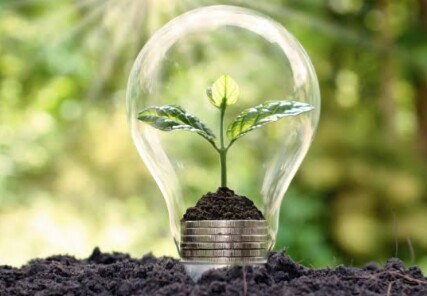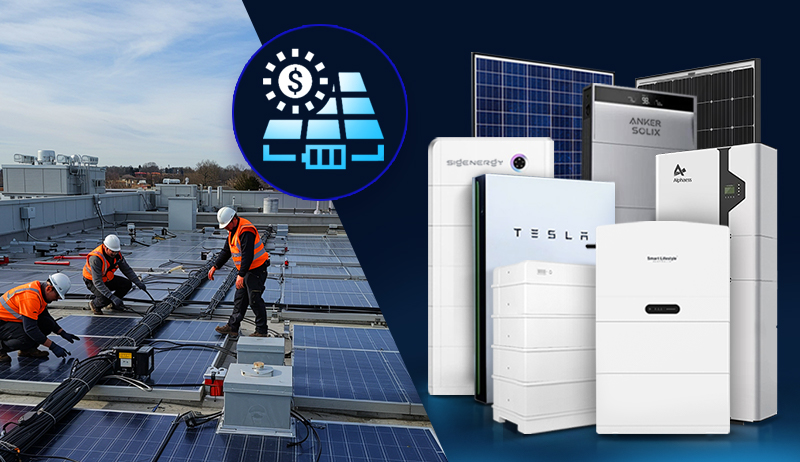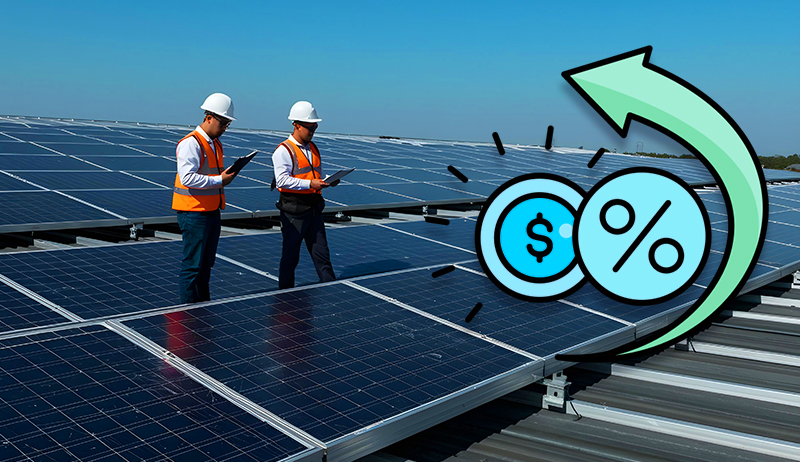Biofuel
Bioenergy, derived from biomass such as organic waste, agricultural residues, and dedicated energy crops, has emerged as a key player in the transition towards renewable energy sources.
Bioenergy conversion technologies harness the energy stored in organic matter to generate heat, electricity, and biofuels, offering a sustainable alternative to fossil fuels.
In recent years, significant technological advancements have revolutionized the field of sustainable bioenergy conversion, making it more efficient, economically viable, and environmentally friendly. This article explores some of the notable technological breakthroughs in this field and their potential to shape a renewable future.
Outlook Technological Advancements in Sustainable Bioenergy Conversion
1. Advanced Feedstock Preprocessing:
One of the critical challenges in bioenergy conversion is efficiently processing and converting diverse types of biomass into usable energy forms. Technological advancements have made significant strides in feedstock preprocessing, enabling improved efficiency and cost-effectiveness. Advanced methods such as torrefaction, pyrolysis, and gasification enhance the energy density, homogeneity, and stability of biomass feedstocks, leading to more efficient conversion processes and higher energy yields.
2. Enhanced Biomass Conversion Technologies:
Advancements in biomass conversion technologies have expanded the range of feedstocks that can be used for energy production while improving overall conversion efficiency. Key breakthroughs include:
a. Biochemical Conversion: Advances in enzymatic and microbial processes have improved the efficiency and cost-effectiveness of biochemical conversion methods such as anaerobic digestion and fermentation. These technologies can convert various biomass types into biogas, bioethanol, and other valuable bio-based products.
b. Thermochemical Conversion: Pyrolysis, gasification, and hydrothermal liquefaction are advanced thermochemical conversion techniques that can efficiently convert biomass into biofuels, syngas, and valuable chemicals. Integration of these processes with carbon capture and utilization technologies can further reduce greenhouse gas emissions and enhance the sustainability of bioenergy conversion.
c. Direct Combustion and Cogeneration: Advanced combustion technologies, including fluidized bed combustion and co-firing, have improved the efficiency and environmental performance of direct biomass combustion. Combined heat and power (CHP) systems enable simultaneous generation of heat and electricity, maximizing energy utilization and reducing overall emissions.
3. Waste-to-Energy and Biorefinery Concepts:
Technological advancements have enabled the development of waste-to-energy and biorefinery concepts, further enhancing the sustainability and economic viability of bioenergy conversion:
a. Waste-to-Energy: Integrated systems that utilize organic waste streams, such as food waste and agricultural residues, for energy generation have gained momentum. Advanced anaerobic digestion and gasification processes can efficiently convert these waste streams into biogas and biofuels, reducing landfill waste and generating renewable energy.
b. Biorefineries: Biorefineries integrate multiple conversion technologies to extract maximum value from biomass feedstocks. These facilities produce a wide range of bio-based products, including biofuels, chemicals, and materials, fostering a circular economy approach to biomass utilization.
4. Smart Monitoring and Control Systems:
Automation and digitalization play a crucial role in optimizing bioenergy conversion processes. Advanced monitoring and control systems, coupled with machine learning and artificial intelligence, enable real-time performance monitoring, predictive maintenance, and process optimization.
These technologies enhance efficiency, reduce downtime, and ensure optimal energy output, making bioenergy conversion more reliable and economically viable.
Conclusion Technological Advancements in Sustainable Bioenergy Conversion
Technological advancements in sustainable bioenergy conversion have propelled the development and adoption of renewable energy sources derived from biomass.
These advancements have led to improved efficiency, increased feedstock flexibility, and reduced environmental impacts.
The integration of advanced feedstock preprocessing, enhanced conversion technologies, waste-to-energy concepts, and smart monitoring systems has paved the way for a renewable future
https://www.exaputra.com/2023/06/technological-advancements-in.html
Renewable Energy
ACORE Applauds Maryland Gov. Moore’s New Executive Order on Energy Affordability and Reliability
-
Grid Infrastructure -
Policy -
Siting & Permitting Reform -
Technology -
Press Releases
ACORE Applauds Maryland Gov. Moore’s New Executive Order on Energy Affordability and Reliability
ACORE Applauds Maryland Gov. Moore’s New Executive Order on Energy Affordability and Reliability
FOR IMMEDIATE RELEASE
Dec. 19, 2025
WASHINGTON, D.C. — The American Council on Renewable Energy (ACORE) issued the following statement from ACORE President and CEO Ray Long in response to Governor Wes Moore’s announcement of new initiatives to build an affordable and reliable energy future for Maryland.
“ACORE applauds Gov. Wes Moore for setting forth a new series of energy initiatives that seek to stabilize energy bills while ensuring grid reliability and efficiency for Marylanders. In particular, ACORE commends key provisions in the order to increase the deployment of advanced transmission technologies; streamline the siting and permitting of high-voltage transmission, energy storage, and other infrastructure; advance wholesale market reforms; and more. As the country enters a new era of electricity demand, initiatives like Gov. Moore’s will facilitate significant progress toward building a modern and reliable grid needed to maintain economic competitiveness and keep the lights on,” said ACORE President and CEO Ray Long.
###
ABOUT ACORE
For over 20 years, the American Council on Renewable Energy (ACORE) has been the nation’s leading voice on the issues most essential to clean energy expansion. ACORE unites finance, policy, and technology to accelerate the transition to a clean energy economy.
For more information, please visit http://www.acore.org.
Media Contacts:
Stephanie Genco
Senior Vice President, Communications
American Council on Renewable Energy
communications@acore.org
The post ACORE Applauds Maryland Gov. Moore’s New Executive Order on Energy Affordability and Reliability appeared first on ACORE.
https://acore.org/news/acore-statement-on-gov-wes-moores-new-energy-executive-order/
Renewable Energy
Meat–It’s What’s for Dinner, if You Don’t Care about the Animals or the Planet
 We often hear meat-eaters say things like, “If beef isn’t good, why do the manufacturers of plant-based burgers try so hard to make their burgers taste like real meat?”
We often hear meat-eaters say things like, “If beef isn’t good, why do the manufacturers of plant-based burgers try so hard to make their burgers taste like real meat?”
There is no doubt that cow and pig meat tastes and smells great; every vegan on Earth will tell you that.
The problem lies elsewhere, in a) the environmental impact of clearing the rainforests to make room for more cows, and b) the cruelty inherent in factory farming and the slaughtering of the animals.
Meat–It’s What’s for Dinner, if You Don’t Care about the Animals or the Planet
Renewable Energy
FAQs: Your Most Common Commercial Solar Questions Answered
The post FAQs: Your Most Common Commercial Solar Questions Answered appeared first on Cyanergy.
https://cyanergy.com.au/blog/faqs-your-most-common-commercial-solar-questions-answered/
-
Climate Change4 months ago
Guest post: Why China is still building new coal – and when it might stop
-
Greenhouse Gases4 months ago
Guest post: Why China is still building new coal – and when it might stop
-
Climate Change2 years ago
Spanish-language misinformation on renewable energy spreads online, report shows
-

 Greenhouse Gases2 years ago
Greenhouse Gases2 years ago嘉宾来稿:满足中国增长的用电需求 光伏加储能“比新建煤电更实惠”
-
Climate Change Videos2 years ago
The toxic gas flares fuelling Nigeria’s climate change – BBC News
-

 Climate Change2 years ago
Climate Change2 years ago嘉宾来稿:满足中国增长的用电需求 光伏加储能“比新建煤电更实惠”
-

 Carbon Footprint2 years ago
Carbon Footprint2 years agoUS SEC’s Climate Disclosure Rules Spur Renewed Interest in Carbon Credits
-
Climate Change2 years ago
Why airlines are perfect targets for anti-greenwashing legal action



 Full energy assessment
Full energy assessment



